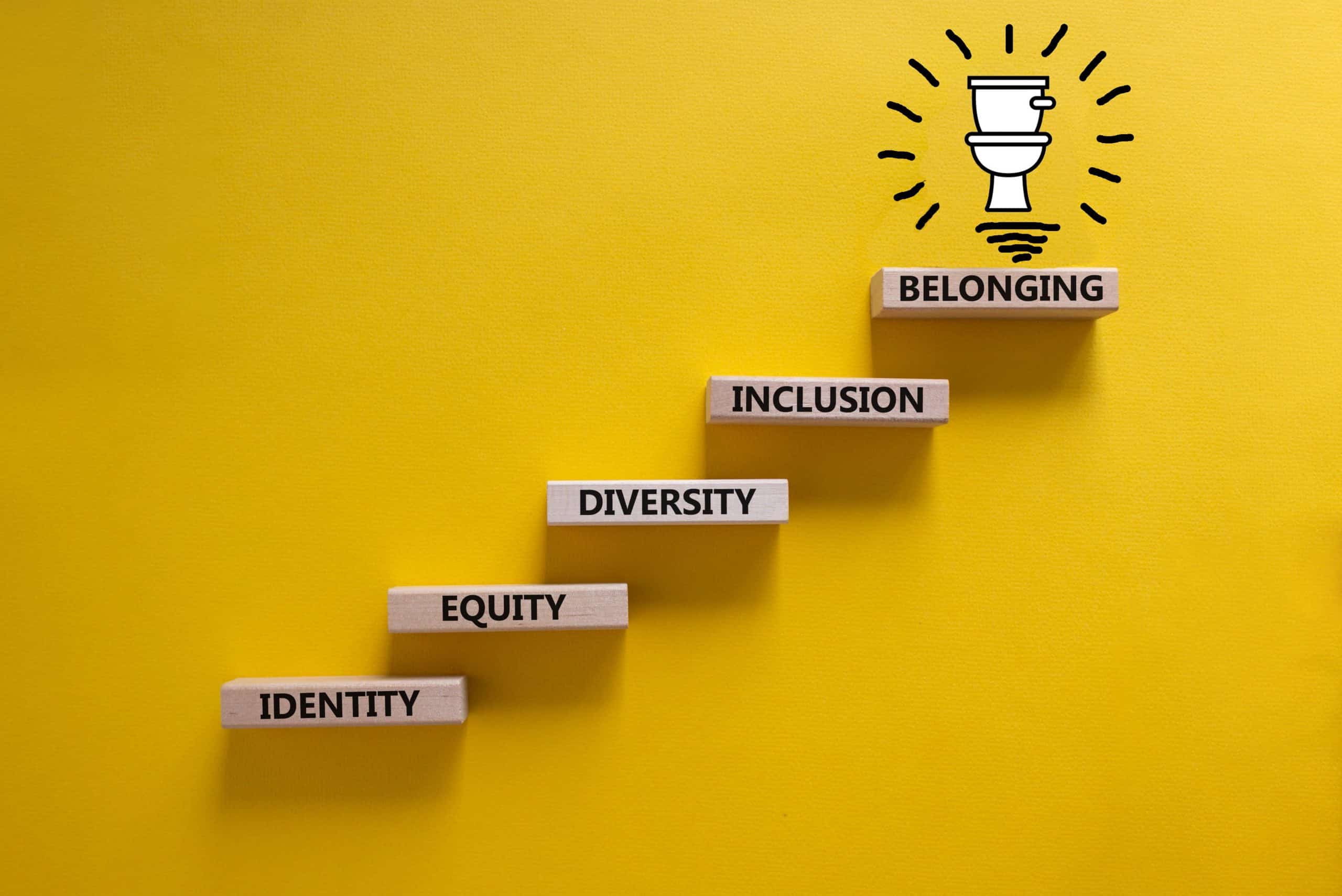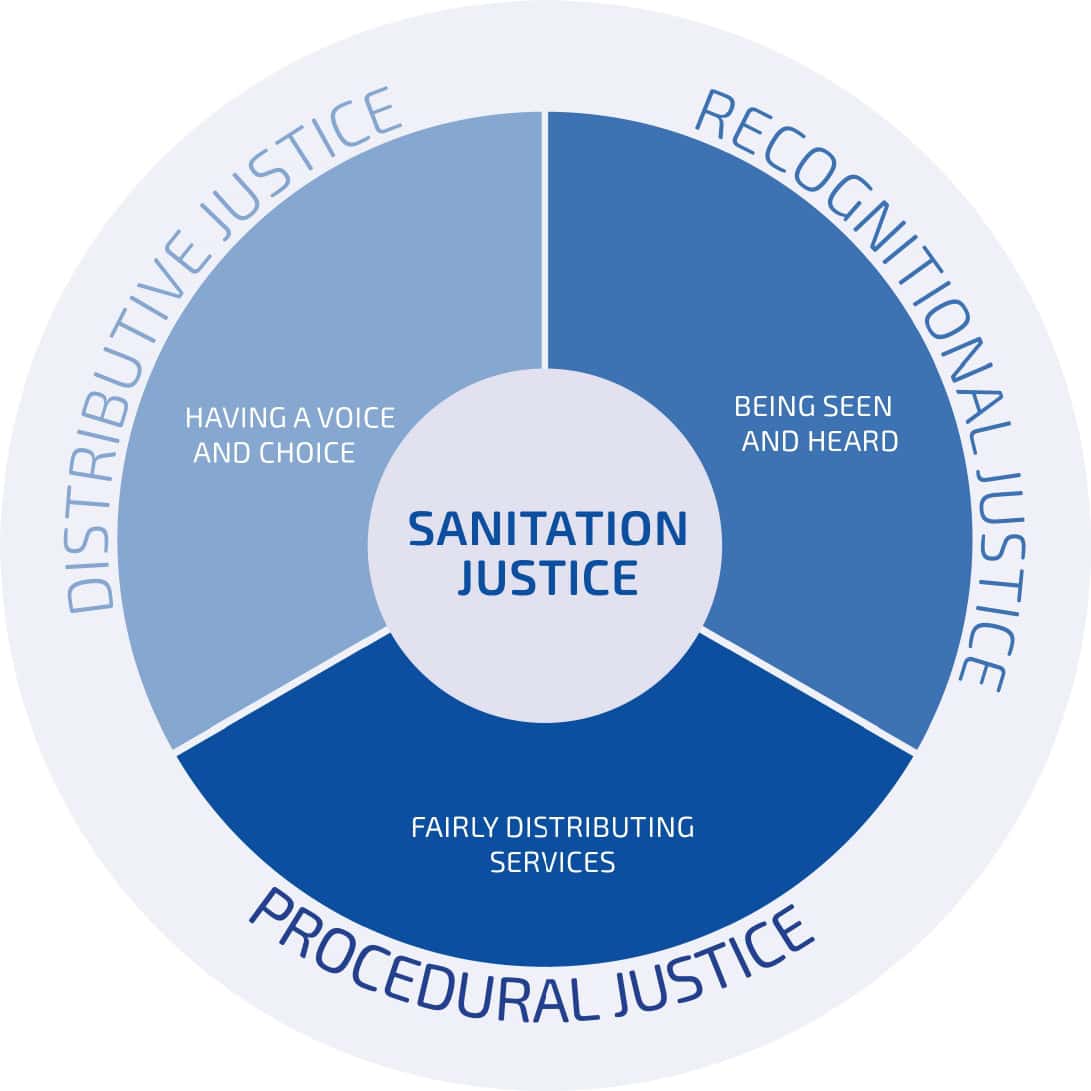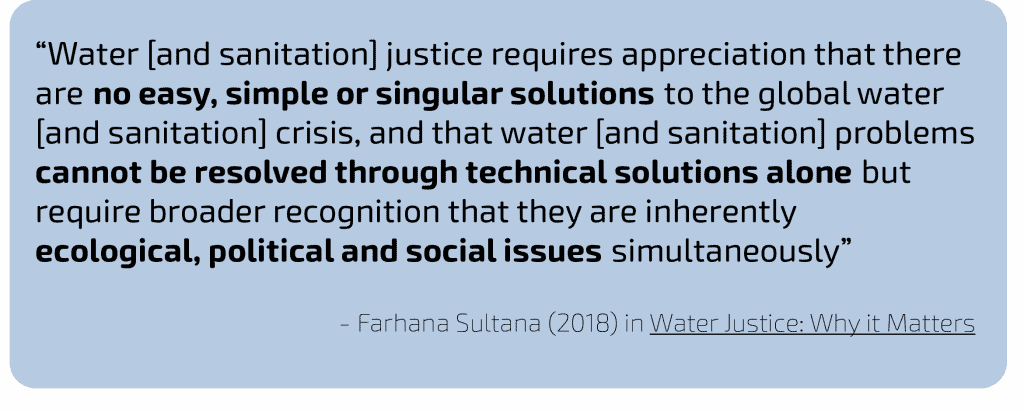
Sanitation justice, simply defined, means ensuring people from all backgrounds have equitable access to functioning sanitation systems. This means that all people have a safe place to meet bodily needs and an accompanying system that treats human excrement without causing harm (i.e. inclusive and safe public toilets, toilets and pipes that remove wastewater from homes to functioning wastewater treatment facilities or septic systems, and other treatment measures).
Vulnerable people in the United States, including low-income folks in urban areas, people living in remote rural areas, and communities of color, are most affected by malfunctioning or nonexistent sanitation systems.



* Hunter, Brandon. 2020. Sanitation Justice: Community-Inspired Academic Research Conducted Under Different Theories of Change; US Water Alliance, Dig Deep. 2019. Closing the Water Access Gap in the United States.
WHAT ARE EXAMPLES OF SANITATION INJUSTICE?
HOW CAN THESE INJUSTICES BE ADDRESSED?
While many earlier scholars and activists have defined water justice, only a few scholars (i.e. Ben Crow, Brandon Hunter, Rusca et al.) have clarified sanitation justice to date. These issues are interconnected, but we focus on equity in sanitation services specifically. Rusca, Alda-Vidal, and Kooy have described distributive, procedural, and recognitional justice as the three important facets to achieving sanitation justice.
These injustices must be approached using an equitable approach to managing sanitation systems, including:

Learn which groups are impacted and how they speak of their water/sanitation needs.
Incorporate these groups in policy and water/sanitation governance.
Work to improve infrastructure to ensure the equitable distribution of water/sanitation services.
Allocations of sanitation and associated services as well as negative impacts should be equitable. Inequitable allocation of sanitation and related services results in uneven risks for some groups (e.g. contamination of drinking water, negative health impacts such as Hookworm and other diseases transferred via fecal contact).

This more relational approach to understanding water injustices goes beyond earlier universalistic definitions which saw justice as something embedded in legal systems that unequivocally considered all humans equal.
Theories of water [and sanitation] justice vary in the university setting depending on whether they arose in the “environmental justice” or “political ecology” literature sets. Those looking at water justice using an “environmental justice” lens (for example, Carolina Balazs, Lyla Mehta, Malini Ranganathan, David Schlosberg) followed in the footsteps of environmental-justice and right-to-water activists. Original theories of “environmental justice” only call attention to the unequal distribution of environmental burdens based on race and class, but Schlosberg believes that it is also necessary to recognize the diversity of participants and their participation in political processes.
Ranganathan and Balazs compare “environmental justice” to “political ecology” literature looking at water access, state practice, and political agency in water injustices in peri-urban areas in the Global North and South. Those looking at water justice using a “political ecology” lens (for example, Jessica Budds, Rutgerd Boelens, Jamie Linton, Tom Perrault, Farahana Sultana, Margreet Zwarteveen) treat nature, technology and society as mutually constitutive influencing how water is distributed and managed.
Boelens, Vos, Perrault add socio-ecological justice to the original three domains proposed by Schlosberg (i.e. distribution, recognition, participation justices). In general, these scholars are concerned with the distribution of environmental risks and benefits happening through social processes.
HOW IS PHLUSH INVOLVED IN SANITATION JUSTICE?
Sanitation justice underlies much of PHLUSH's advocacy work, which began with the push for more public toilets in Portland, Oregon in 2006. We continue learn from our grassroots efforts with communities, such as advocates for the rights of the homeless/unhoused, rural communities primarily on septic systems, transgender/all-gender rights activists, and racial justice activists. We also are learning from a growing body of scholarly work on sanitation justice.
WHO ELSE IS INVOLVED IN SANITATION JUSTICE?
Sanitation justice has become more visible globally and nationally in the last few decades as policy-makers and activists work to increase access to equitable sanitation systems. Global policy-makers enacted an International Decade for Clean Drinking Water (e.g. which included targets for sanitation provision) from 1981-1990, instituted the Millenium Development Goals (MDGs) in 2000 with targets for water and sanitation under Goal 7 to Ensure Environmental Sustainability, adopted a resolution on the right to water and sanitation in 2010 with a separate distinct right to sanitation being acknowledged 2015, and enacted the Sustainable Development Goals (SDGs) in 2015 with Goal 6 for water and sanitation access.
Various US-based activists (e.g. environmental justice, housing and homeless, and sanitation) have also worked on sanitation access with an increasingly more prominent focus on equity. Environmental justice activists in the 1980s and 90s brought attention to the inappropriate citing of wastewater treatment facilities for communities already marginalized by race, ethnicity, and indigeneity. Housing and homeless activists have lobbied for group camps to have sanitation facilities like Port-a-Potties, and they have started providing hygiene facilities to individuals living outside beginning in the 2000s. Grassroots sanitation groups have popped up across America working on various topics such as public toilet design, public toilet provision, and code change for sanitation systems. These activists might not directly state sanitation justice as their goal, but their efforts at increasing access for vulnerable communities (e.g. Black, Latinx, low-income, rural, women, trangender, homeless) falls into the realm of sanitation justice.
Here are some organizations working on sanitation justice and their projects. PHLUSH thanks the US Water Alliance for informing us of some of the organizations on this list. For a comprehensive list of organizations working on the domestic WASH (Water, Sanitation, and Hygiene) sector, visit DIGDEEP’s WaSH Database.
Subscribe to our newsletter!




















